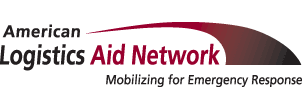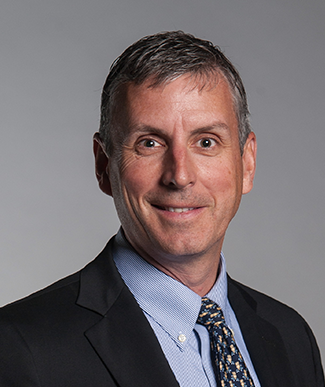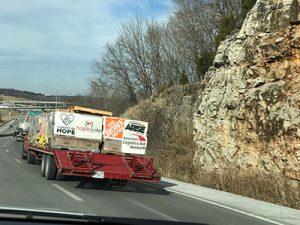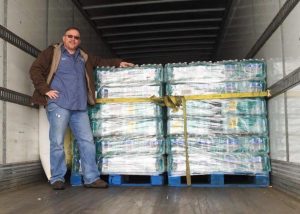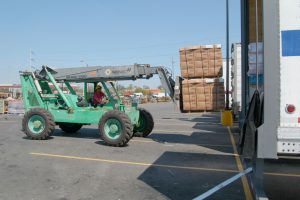By Robert Martichenko – Board Member, American Logistics Aid Network
It was my honor and pleasure in 2019 when my friend Mark Richards called and asked if I would join the board of the American Logistics Aid Network (ALAN). The timing was good as I was at that point in one’s career when we look for opportunities to give back to the communities that have given to us. The specific organization was also a good fit, as I was somewhat familiar with ALAN and realized the organization was clearly attempting to improve upon processes that impact people directly and with significance. I knew I would enjoy the people, the work, and the outcomes we would hopefully produce.
What I did not realize, however, was how little I actually knew about ALAN and the incredible and valuable contribution it has made to the supply chain industry, disaster relief logistics, and society at large.
In this spirit, let me walk us through the past, present and future of ALAN so we can all better understand, connect with, and support the vision, mission, and value proposition of the American Logistics Aid Network.
The Past
Flash back to San Diego, California. The year was 2005 and thousands of supply chain professionals were gathering for the CSCMP Annual Conference.
A hot topic of conversation was the recent events relative to Hurricane Katrina – and many of the supply chain “fails.” Specifically, it appeared as if many not-for-profit (NFP) organizations wanted to provide help to Katrina survivors but were unable to deliver the goods to disaster sites due to logistics constraints.
As the dialogue developed, a group of supply chain professionals collectively agreed that, “There must be something we can do, that there must be a better way to coordinate disaster relief responses as they relate to logistics and supply chain processes.”
And thus the seeds of ALAN were germinated.
Enter a cast of original thought leaders – Maria Mcintyre, Bruce Abels, Mark Richards, Mike Gardner, Jock Menzies, Richard Sharpe, Bob Shaunnessey – and more than 50 other like-minded, benevolent professionals who showed up at the first ALAN brainstorming meeting. In other words, enter a cast of logistics experts who really knew their stuff about transportation, warehousing, material handling and all things supply chain related.
There was only one problem: What did they know about the world of not-for-profits and disaster relief?
Thankfully the late Jock Menzies – a longtime supply chain expert who was also present that day –
brought experience working with the Red Cross. Jock had developed extensive contacts throughout multiple industries including the NFP world. He also shared a passion for giving back as evidenced by the incredible amount of his time he donated to ALAN. As a result, he was a natural choice to become ALAN’s first president.
Two other critical elements came out of the early years.
The first was ALAN’s original mission. Our founding group knew that there were many wonderful non-profits who were already working to provide food, water, medical care and other forms of direct assistance to disaster survivors. And it felt strongly that these non-profits (and disaster survivors) didn’t need another non-profit that would try to replicate and compete with these efforts. In fact, such efforts might have just added to the chaos and gotten in the way of existing relief efforts.
Instead, what these non-profits really needed was a humanitarian group that could help ‘match and connect’ them with logistics providers who could help them get relief supplies to disaster sites and survivors more quickly – and less expensively. Therefore, matching and connection of entities became the first mission of ALAN.
The second element was funding, because even the leanest of non-profits have some operating costs.
Enter Cliff Otto and the extraordinary generosity of Saddle Creek Logistics Services, which offered to provide ALAN with donated office space and technology support. (Sixteen years later, it’s still providing that donation as well as web site assistance to a truly grateful ALAN. It also did ALAN a “solid” by introducing ALAN to Kathy Fulton, the loaned IT executive who became ALAN’s executive director upon the untimely death of Jock Menzies in 2013. So thank you, Saddle Creek. )
More organizations also stepped up with significant financial support, signing on as sponsors, contributors and sustaining members – and agreeing to provide the free supply chain services, insights and equipment that ALAN’s many non-profits partners have needed over the years.
And with that… as Mark Richards would say… The Rest is History.
Which brings us to current day. Some 16 years later, ALAN has helped with more than 4 dozen disasters. And it’s supported by multiple professional organizations and supply chain businesses, including many whose names you might recognize. Just as important, it’s been engaging in a lot of soul-searching, which has led to an exciting new chapter in the story of its growth. . . .
To be continued. Check back next week, when we’ll publish Part II of this blog.
